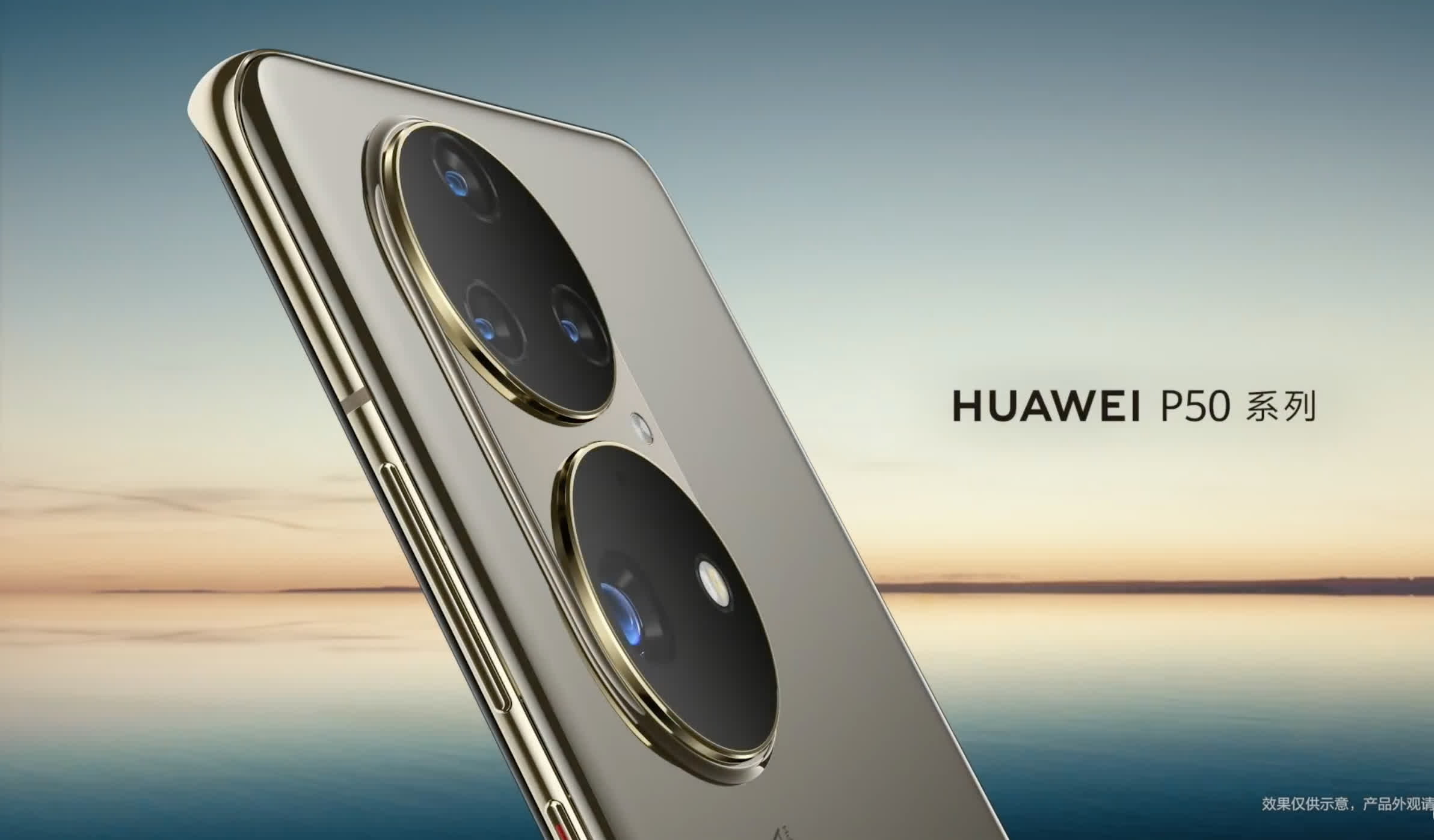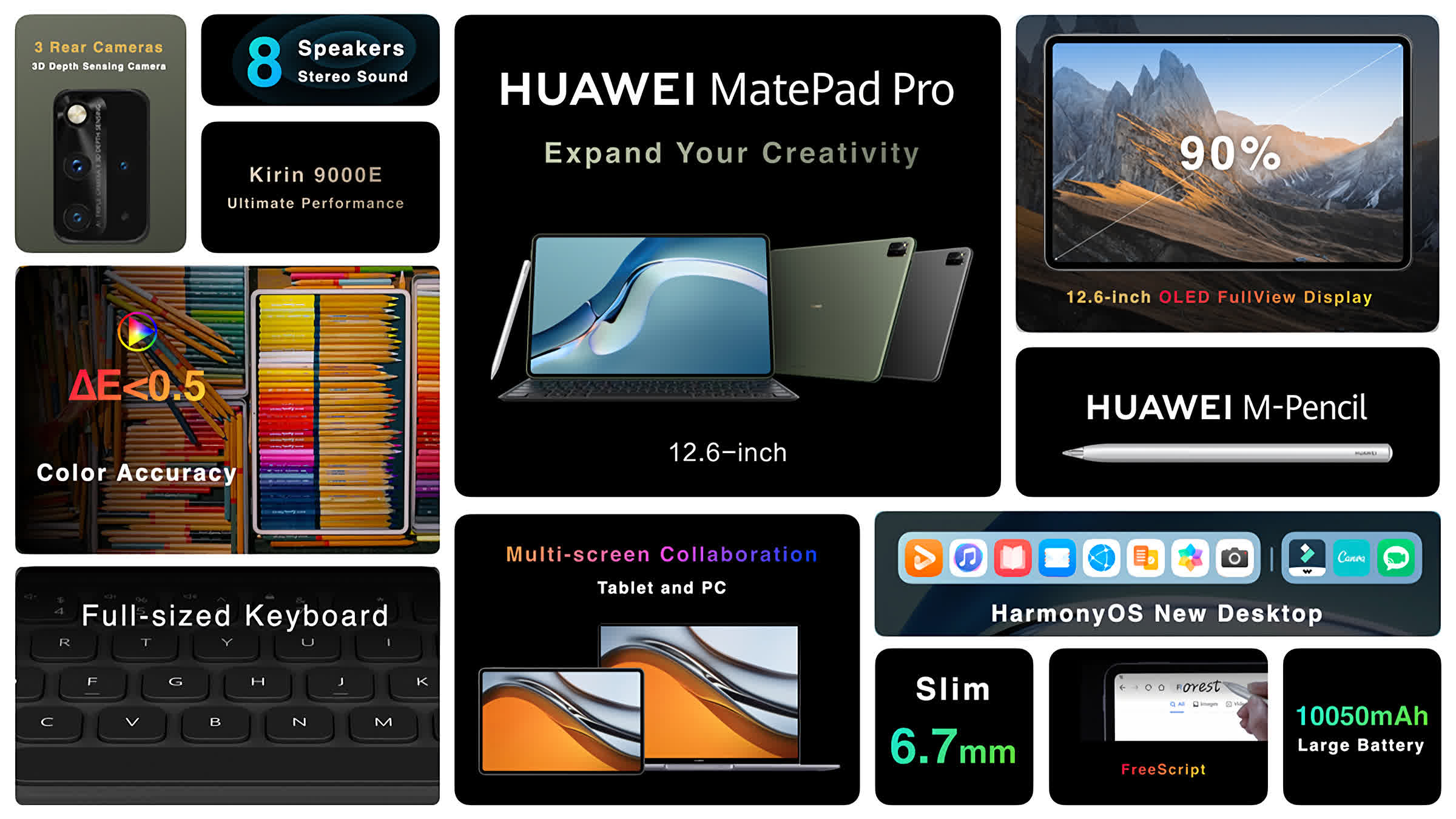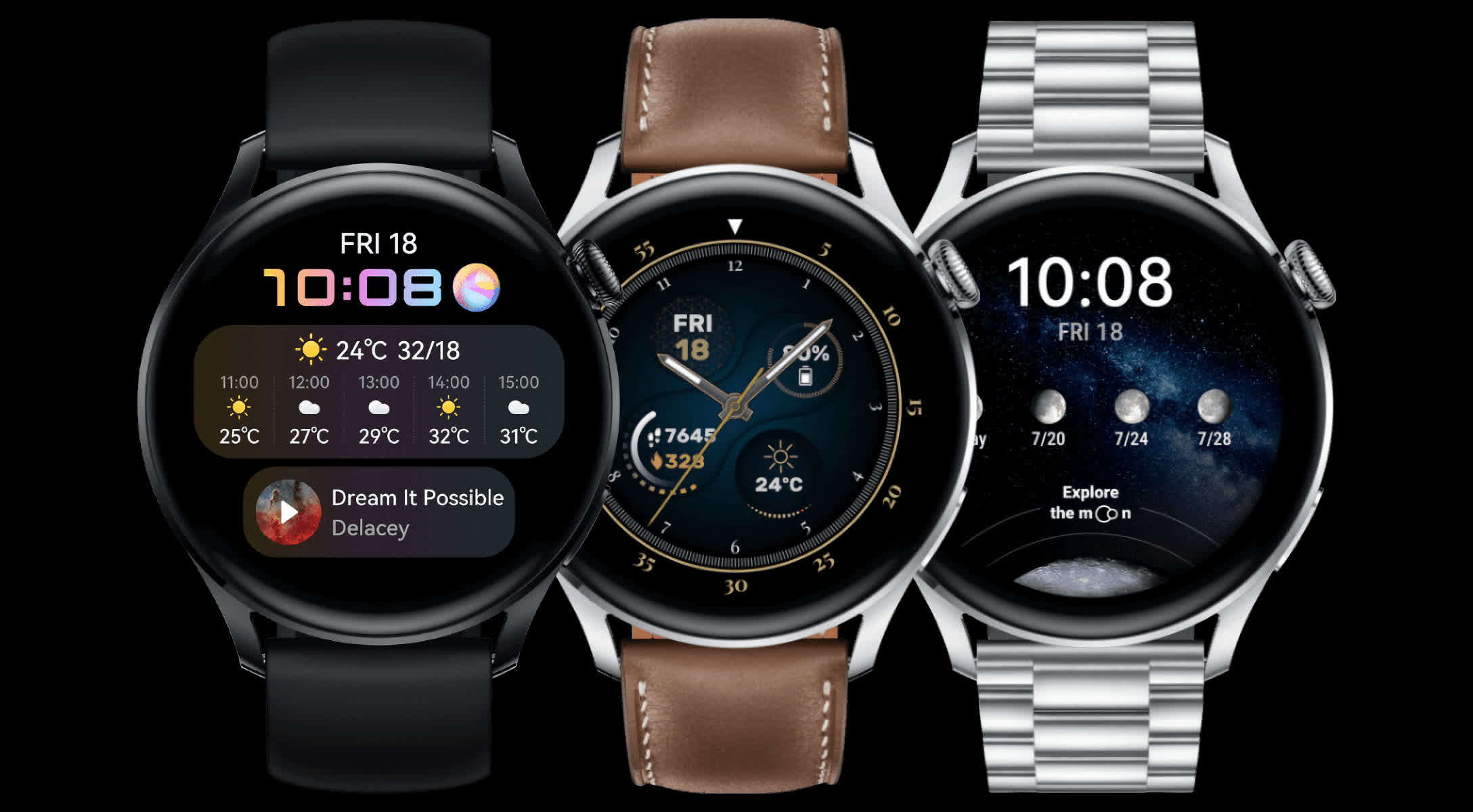Cutting corners: Huawei hopes that by pushing new devices with Harmony OS 2.0 and updating many of the existing ones, it can break free from the shackles of US sanctions and migrate over 300 million users to the new operating system in a relatively short time frame. Whether or not they can succeed is anyone's guess, but the company seems confident it can thrive without Android and Google services.
Huawei has launched several new products powered by the homegrown Harmony OS 2.0. The company aims to show it can compete with Android by starting the transition with its higher end devices and completing it with existing models that can be updated over the air.
The first devices that will see the update to Harmony OS 2.0 are the Mate 40 series, Mate 30 series, and the exotic Mate X2 foldable phone. People with older phones like the Mate 10 and the P20 series are slated to receive the update the first half of next year. According to CEO Richard Yu, almost 100 models of Huawei tablets, phones, and watches will be able to run the operating system by the end of 2022, including the upcoming P50 smartphone that was teased during the Harmony OS livestream.

The company used the occasion of today's media event to unveil updated versions of its iPad clones. The latest lineup includes a new larger 12.6-inch MatePad Pro, a 10.8-inch MatePad Pro and the MatePad 11. In addition to running Harmony OS 2.0, the Pro versions also come equipped with Huawei's own Kirin 9000 chipsets, but notably the MatePad 11 uses a Snapdragon 865 SoC.
Huawei spent a lot of time talking about the new Harmony OS experience on the new MatePad lineup, but it can really be summed up as a strange imitation of Apple's iPadOS, from the overall look of the home screen down to the "Task Center." The company even added a feature called "FreeScript" that allows you to use the new M-Pencil to write directly into dialog boxes where your handwriting will get converted to typed text. You can also mirror the screen of a MateBook or Huawei phone onto a MatePad or MatePad Pro.

Not everything about the MatePads is a straight carbon copy of a design decision or software feature present in the iPad Pro though. For one, Huawei placed the webcam on the long edge, which is ideal for a lot of people who use their tablets in landscape mode when going into a video call. And while the latest iPad Pro features a Mini LED display, the new MatePad Pro tablets come with OLED screens.
Other notable features are support for 5G and Wi-Fi 6 connectivity, and Huawei promises up to 14 hours of battery life on the MatePad Pro. Even if it doesn't last that long, there's support for fast charging at up to 40 watts over cable and up to 27 watts on a wireless charger. If you're using accessories that support wireless charging, you can also charge them from a MatePad Pro.
Pricing was detailed for the Chinese market only, but it's possible they'll also arrive in Europe in the coming months. The 12.6-inch MatePad Pro and the 10.8-inch MatePad Pro will start shipping on June 10 and will start at 4,999 yuan ($780) and 3,799 yuan ($530), respectively, while the M-Pencil will set you back 599 yuan ($93). Pricing and availability for the MatePad 11 has yet to be announced.
The new Huawei Watch 3 and Watch 3 Pro are also the company's first smartwatches to run Harmony OS. On the hardware side, these borrow aesthetics from several competitors, but it's harder to find an exact watch that these would be a clone of.
You have a new rotating crown instead of the top button on the side of the stainless steel case, and you're greeted by a 1.43-inch AMOLED screen with a pixel density of 326 ppi and 1,000 nits max brightness. It's also surprisingly thin at just 12.15 mm thick, and weighs 54 grams. The Pro variant is 14 mm thick and weighs 63 grams.
The company is touting support for over 100 workout modes and support for blood oxygen saturation (SpO2) tracking, and at least in theory you should be able to stretch the battery life to 21 days if you turn off the 4G LTE connection and put the watch into a low-power mode. Realistically, you can expect around two days of battery life with normal use, but after that you'll need to pop it onto a Qi wireless charger.

The software side suffers from the same shortcomings as the other devices in the Huawei ecosystem – you're limited to the Huawei App Gallery, which may not do the trick if you're outside of China. The company says it's working to bring more apps to Harmony OS, but that's not a guarantee and will probably be a deal breaker for many. For what it's worth, you can participate in video calls made via Huawei's MeeTime app.
The Huawei Watch 3 and Watch 3 Pro will start shipping on June 11 in China and will cost 2,600 yuan ($407) and 3,300 yuan ($517), respectively. The Watch 3 will also arrive in the UK on June 18 at a launch price of £349.99, followed by the Watch 3 Pro which will cost £499.99.